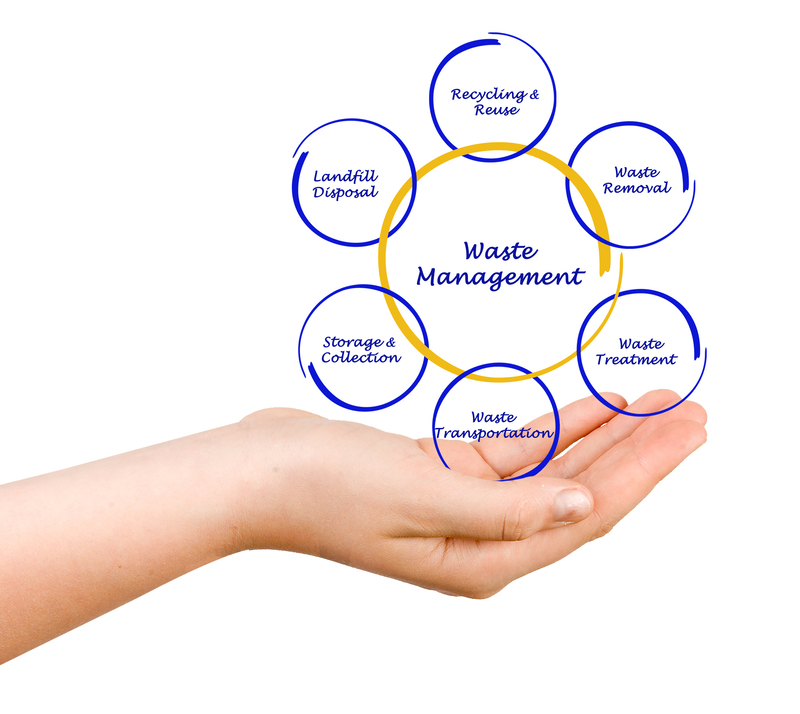Exploring the Innovative Techniques to Recycle Plastic
Plastic pollution has become one of the most pressing environmental challenges of our time. With millions of tons of plastic waste generated and discarded each year, innovative plastic recycling techniques are essential to curb land and ocean pollution, conserve resources, and reduce greenhouse gas emissions. In this comprehensive guide, we will explore the latest advancements in plastic recycling, highlighting breakthrough technologies, emerging trends, and promising solutions that are shaping the future of plastic waste management.

Why Is Innovative Plastic Recycling Important?
Traditional recycling methods have played a key role over the past few decades. However, they face significant limitations, especially with the rising complexity of plastic products and packaging. Some of these challenges include:
- Low recycling rates: Globally, only about 9% of plastic is effectively recycled, with the majority ending in landfills or the environment.
- Plastic contamination: Food residue, mixed materials, and dyes often make mechanical recycling difficult.
- Limited applications: Traditional recycled plastics often have inferior quality, limiting their use to products of lower value (downcycling).
- Energy consumption: Old recycling processes can consume lots of energy, reducing their environmental benefits.
This is why the world needs to embrace advanced and innovative plastic recycling methods that go beyond established, conventional approaches.
An Overview of Cutting-Edge Plastic Recycling Techniques
- Mechanical Recycling 2.0
- Chemical Recycling
- Biological Recycling
- Advanced Sorting Technologies
- Innovative Upcycling & Circular Solutions
Let us examine each of these revolutionary techniques for plastic recycling in greater detail.
Mechanical Recycling 2.0: Pushing the Boundaries
Mechanical recycling - shredding, melting, and remolding plastic waste into new products - is the most common recycling method. While effective with clean and uncontaminated single-type plastics such as PET and HDPE, it faces difficulties with mixed or colored plastics.
Recently, innovations in mechanical recycling have significantly improved both efficiency and the quality of recycled products. These advancements include:
- Enhanced sorting technologies: Use of near-infrared (NIR) sensors and artificial intelligence (AI) for accurate identification and separation of different polymers, even in multi-layered or colored plastics.
- Improved washing and decontamination: Advanced washing systems and chemical treatments can better remove labels, adhesives, and food residues, resulting in purer plastic feedstocks.
- High-performance additives: Introduction of stabilizers and compatibilizers during remanufacturing to restore mechanical properties and color to recycled plastics.
Thanks to these advancements, mechanical recycling can now produce high-quality resins suitable even for demanding applications like food packaging and automotive parts--a breakthrough in plastic recycling innovation.
The Rise of Chemical Recycling
Perhaps the most exciting trend in plastic recycling technology is chemical recycling, also known as advanced or molecular recycling. Unlike mechanical recycling, which physically alters plastics, chemical recycling breaks polymers down to their fundamental building blocks (monomers), allowing for the creation of virgin-quality plastics over and over.
- Pyrolysis: This method involves heating waste plastics in an oxygen-free environment, converting them into synthetic crude oil (pyrolysis oil), gases, and char. The oil can be used to produce new plastics, fuels, and chemicals.
- Depolymerization: This process breaks complex polymers such as PET, polystyrene, and nylon into their original monomers using catalysts and controlled heat/pressure. These monomers can then be repolymerized to create high-quality plastic.
- Solvent-based purification: Dissolves plastics in specific solvents to separate pure polymers from additives and contaminants, enabling recovery of pristine materials.
*Chemical recycling* offers several key advantages:
- Handles mixed or contaminated plastics that are unsuitable for traditional recycling.
- Produces plastics of equal quality to virgin materials, supporting true circularity.
- Reduces landfill and incineration, leading to lower greenhouse gas emissions.
Major companies like Eastman, BASF, and SABIC have already launched commercial-scale chemical recycling plants, signifying a dramatic shift towards *circular plastic economies*.
Biological Recycling: Harnessing Nature
An emerging field in the innovation of plastic recycling is biological recycling or biorecycling. This technique uses specific bacteria, fungi, or enzymes to break down otherwise persistent plastics, transforming them into useful raw materials or harmless end products.
- Enzymatic breakdown: Scientists have discovered and engineered enzymes--such as PETase and MHETase--that can rapidly digest PET (used in bottles and clothing) into its constituent monomers, which can then be re-polymerized into new, high-quality PET.
- Microbial consortia: Some microbes feed on plastic waste, breaking it down into CO2, water, or small molecules, which can be converted into bioplastics or other valuable materials.
Key *advantages* of biological recycling include:
- Low-energy processing, which is more eco-friendly.
- Potential to address plastics currently unrecyclable by other methods.
- Biodegradation under controlled conditions minimizes microplastic formation.
Biological recycling is still in its infancy, but rapid progress in biotechnology and synthetic biology promises scalable solutions in the coming decade.
Advanced Sorting Technologies: The Backbone of All Innovative Recycling
Efficient recycling starts with precise sorting of plastic waste streams. Traditional manual sorting is labor-intensive, slow, and prone to error. Today, high-tech sorting systems are revolutionizing plastic recycling by using:
- Near-infrared (NIR) and hyperspectral imaging: Instantly detects and separates plastics by their polymeric fingerprint.
- AI-powered robotics: Machine vision and robotics enable rapid, accurate, and automated sorting of plastics by type, color, and even chemical composition.
- IoT and smart bin systems: Digitalization enables smarter collection, sorting, and tracking of plastic waste in both industrial and municipal settings.
These innovations are crucial for improving the *efficiency* and *accuracy* of all recycling techniques, ensuring maximal resource recovery and minimal contamination.
Innovative Upcycling & Circular Solutions
Instead of simply recycling plastic into products of lower value, upcycling transforms waste plastics into materials of higher quality or use. This approach drives a shift toward a truly circular plastic economy.
- Plastic-to-fuel: Converting hard-to-recycle plastics into diesel, gasoline, or other liquid fuels through pyrolysis and gasification.
- Plastic-to-construction materials: Utilizing recycled plastics to manufacture durable road surfacing, bricks, or interlocking blocks, providing cost-effective solutions especially in developing nations.
- Innovations in textiles: Brands are turning recycled ocean plastics into high-performance clothing, shoes, and accessories.
Multiple startups and global giants alike are harnessing creative plastic upcycling methods, showing that plastic waste can be a feedstock for next-generation industries.
Challenges Facing Innovative Plastic Recycling Techniques
While these groundbreaking approaches offer tremendous promise, several hurdles must be overcome for widespread adoption of advanced plastic recycling:
- Economic viability: High initial investment costs can deter rapid scaling of new technologies.
- Policy and regulation: Compliance with health, safety, and environmental standards for novel materials is critical.
- Contamination and inconsistent plastic waste streams hinder recycling efficiency.
- Public and industry awareness: Transitioning to circular systems needs strong collaboration.
Nevertheless, the benefits--reduced pollution, resource conservation, and new market opportunities--make overcoming these challenges worthwhile.
The Role of Consumers and Industry in Driving Plastic Recycling Innovation
Industry players and consumers alike are vital to the success of the latest recycling technologies*. Here's how:
- Brands and manufacturers can design products and packaging for recyclability and use more recycled content in their goods.
- Municipalities and governments can invest in modern recycling infrastructure and set ambitious recycling targets.
- Consumers can improve recycling rates by properly sorting plastics and supporting companies that innovate with sustainable materials.
By working together, society can accelerate the adoption of innovative ways to recycle plastic and transition to a more circular, sustainable future.

What Does the Future Hold for Plastic Recycling?
The coming years promise rapid progress in the field of innovative plastic recycling. Researchers are exploring next-generation techniques such as:
- Hybrid chemical-biological recycling--combining the strengths of both methods.
- Plastics made for easier recycling, including smart packaging that changes color when ready for recycling or contains embedded markers for easier sorting.
- Blockchain and digital tracking--ensuring transparency and accountability in the recycling supply chain.
With government policies pushing for single-use plastic bans, extended producer responsibility (EPR), and global circularity targets, stakeholders worldwide are investing in research and startups dedicated to solving the plastic crisis through innovation.
Conclusion: Building a Greener Future through Innovative Plastic Recycling
Innovative techniques to recycle plastic are paving the way for a cleaner planet and a circular economy. From advanced sorting technologies and mechanical improvements, to chemical and biological recycling breakthroughs, and creative upcycling strategies, the world is on the brink of a plastic revolution. By embracing these new technologies, and through the collaboration of governments, industries, and consumers, we have the unique opportunity to create a sustainable future free from plastic pollution.
For more information on new and innovative plastic recycling techniques, keep exploring industry news, government reports, and scientific breakthroughs. Every effort brings us one step closer to a world where plastics are no longer wasted, but continually reborn as valuable resources.
Frequently Asked Questions
1. What is the most promising plastic recycling technology currently?
Chemical recycling and biorecycling are seen as the most promising for addressing plastics not suitable for traditional methods.
2. Can all plastics be recycled with new technologies?
While not all plastics are fully recyclable yet, innovative solutions are rapidly expanding the range and capability of plastic recycling options.
3. How can individuals support innovative plastic recycling?
Properly sorting waste, supporting companies using recycled plastics, and advocating for improved recycling systems all make a difference.
Together, we can turn the tide on plastic pollution with the power of innovation!